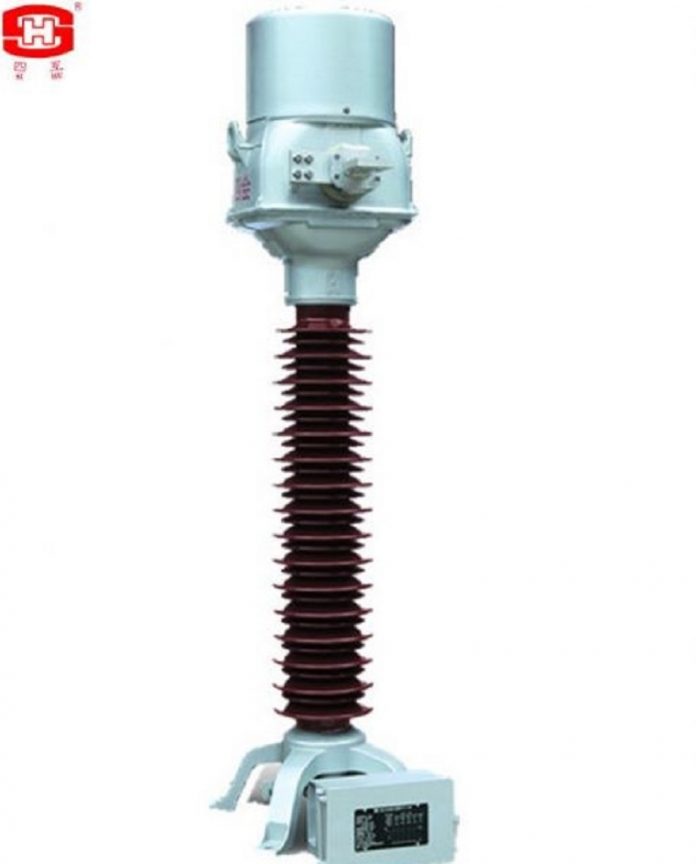You must have seen this kind of object in the air.
Yes, they are current transfomers.
Current transformers can be applied to household appliances, smart grids, electric vehicles, wind power, computer hard drives, compasses, etc.
But how many of you are familiar with it?
Those are transformers. The transformer has two types, one is the CT transformer, the other is the voltage transformer. They are mainly used in the Power industry.
This article is about to offer you common sense about the CT transformer. The introduction will be delivered into three parts, including the working principle, sample introduction, and the maintenance.
#Working principle
In power supply and distribution systems, sometimes large currents and high voltages cannot be measured directly with ammeters or voltmeters and must be scaled down by transformers to measure.
Another purpose is for protection, and it is often used in conjunction with the relay device. When the line is short-circuited or overloaded, the current transformer sends a signal to the relay device to cut off the fault circuit, thereby achieving protection power supply, contributing to the system security.
The protection current transformer is different from the one for measurement, because it can work effectively only when the current is several times or dozens of times larger than the normal current, and it requires reliable insulation and sufficient accuracy limit, sufficient thermal stability and dynamic stability.
The working principle of the current transformer is equivalent to that of the transformer with a short-circuit on the 2nd side. It is used to change the current. It converts the large current in the circuit into a small current, which is used to supply the current of the relay of the measuring instrument.
Only a small impedance is allowed in the secondary circuit of the current transformer, so it is close to the short circuit under normal working conditions with the minimal sound, which is generally considered to be silent.
#What is a specific current transformer like? (A sample of it)
Here is the oil immersed current transformer of Sihu.
Its characteristics are as followed.
- It is oil-paper insulated and single phase. Equipped with a metallic expansion bellow, it has argon-arc welding as the connection between components and it also has high-pressure nitrogen to detect leakage after being assembled.
- Oil penetration or leakage caused by oil-immersed products can be resolved at root.
- Being used outdoor, it’s suitable for metering and relay protection of 220kv, 50 or 60Hz system.
- Durable and appropriate for a wide range of environmental conditions.
#Maintenance
In the application process, we need to regularly maintain it in its operation and perform the inspection work, so that the safety of the equipment’s operation is guaranteed.
Here are what should be checked and paid attention to.
- Frequently check the current transformer for overheating. To see if there is discoloration on terminals and whether there is any debris present in the terminal box.
- Inspect the oil level gauge for oil leakage in time and ensure that the oil level meets the use standard; what’s more, to thoroughly clean the porcelain part to prevent discharge and cracking.
- Check the insulation of CT transformer. If that is the oil-filled current transformer, its oil quality should be monitored. And sometimes you are supposed to drain the oil according to the actual situation.
- When checking the ammeter, comprehensively check the three-phase indication in order to prevent overload operation, making sure that it is within the specified range.
- Carefully check the status of the secondary grounding wire to prevent it having a fracture phenomenon. Also, fix the loose part. And the secondary side of the current transformer in operation must not open.
- The output current. If there is a large current, check whether there are any alarm signals such as disconnection or differential flow.
- The reliability of the current transformer grounding.
- To ensure that the operating temperature of the current transformer is below 50 °C.
- If the current transformer is insulated and breaks down due to factors such as overvoltage or damp, it is necessary to completely repair the damaged current transformer.
- After the current transformer is repaired, it is a must to carry out the test as soon as possible. Only when the requirements are met can it be adopted again.
There is more information about the CT transformer you may want to explore, visit https://www.gdshp.com/.

